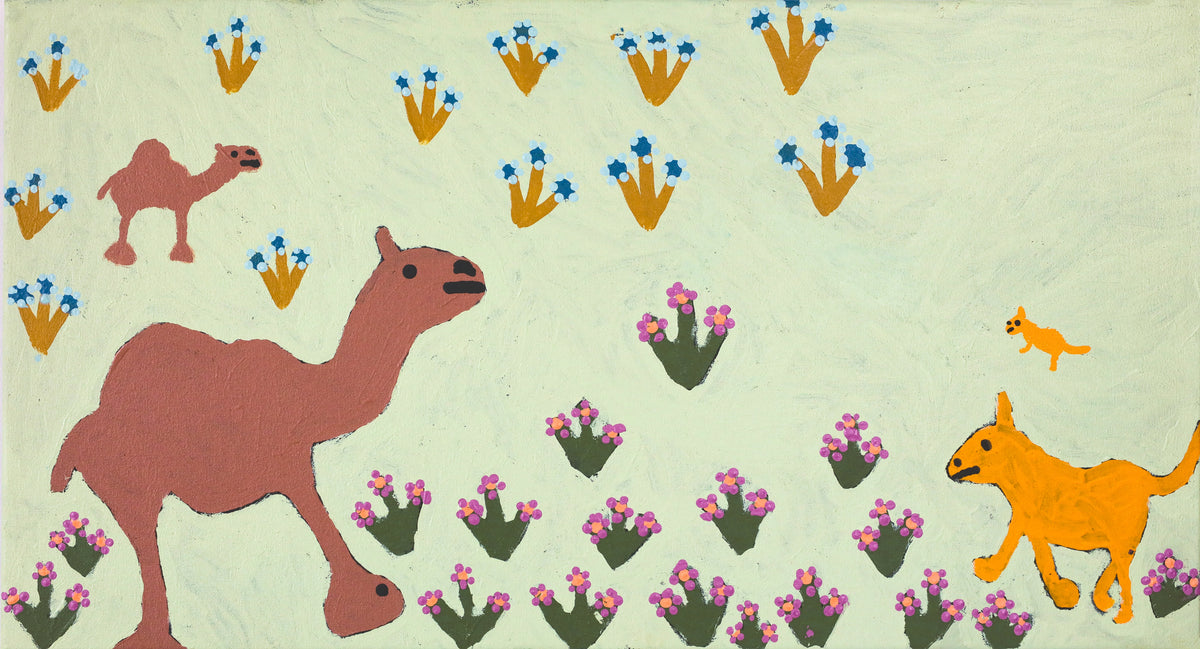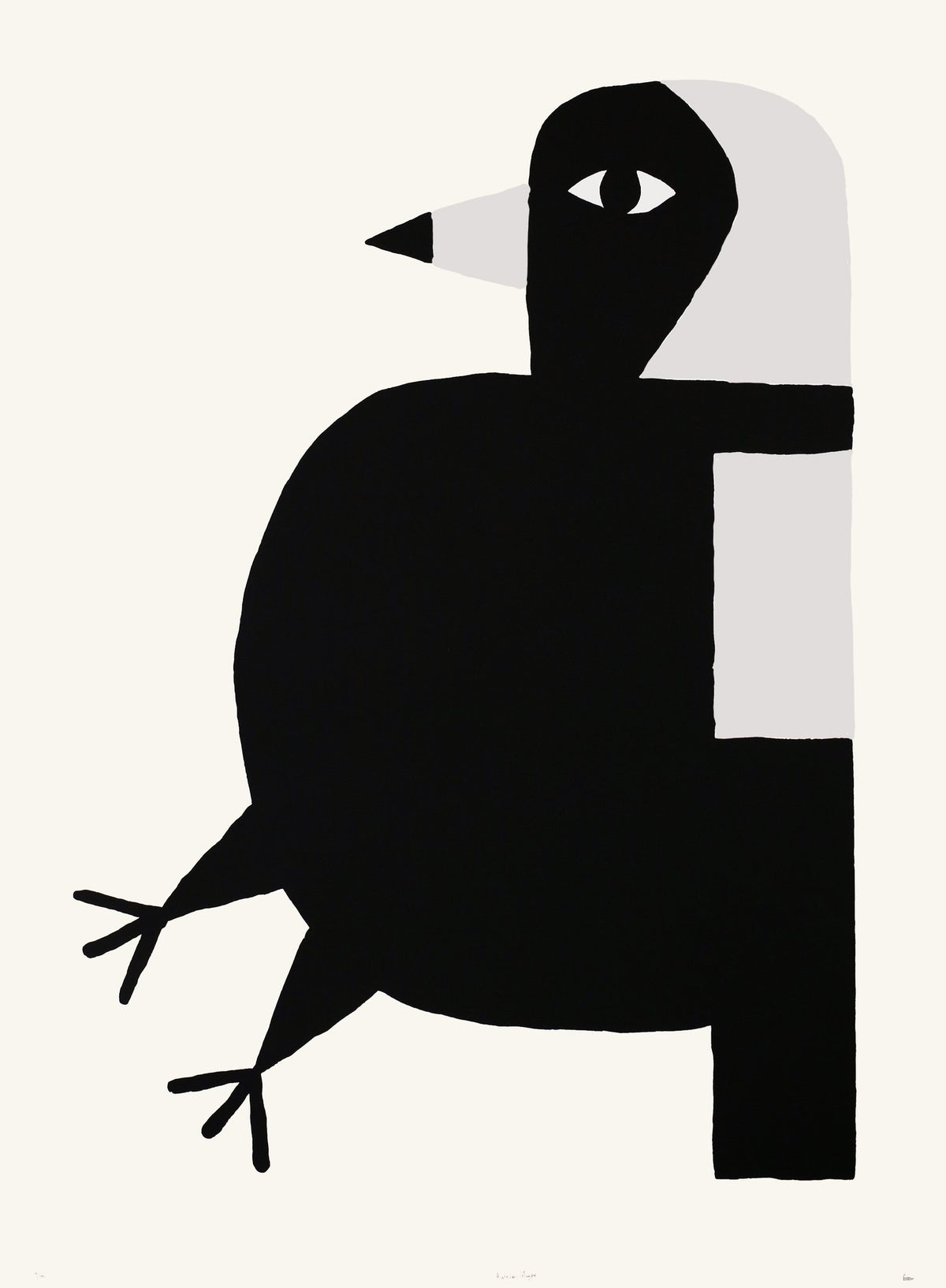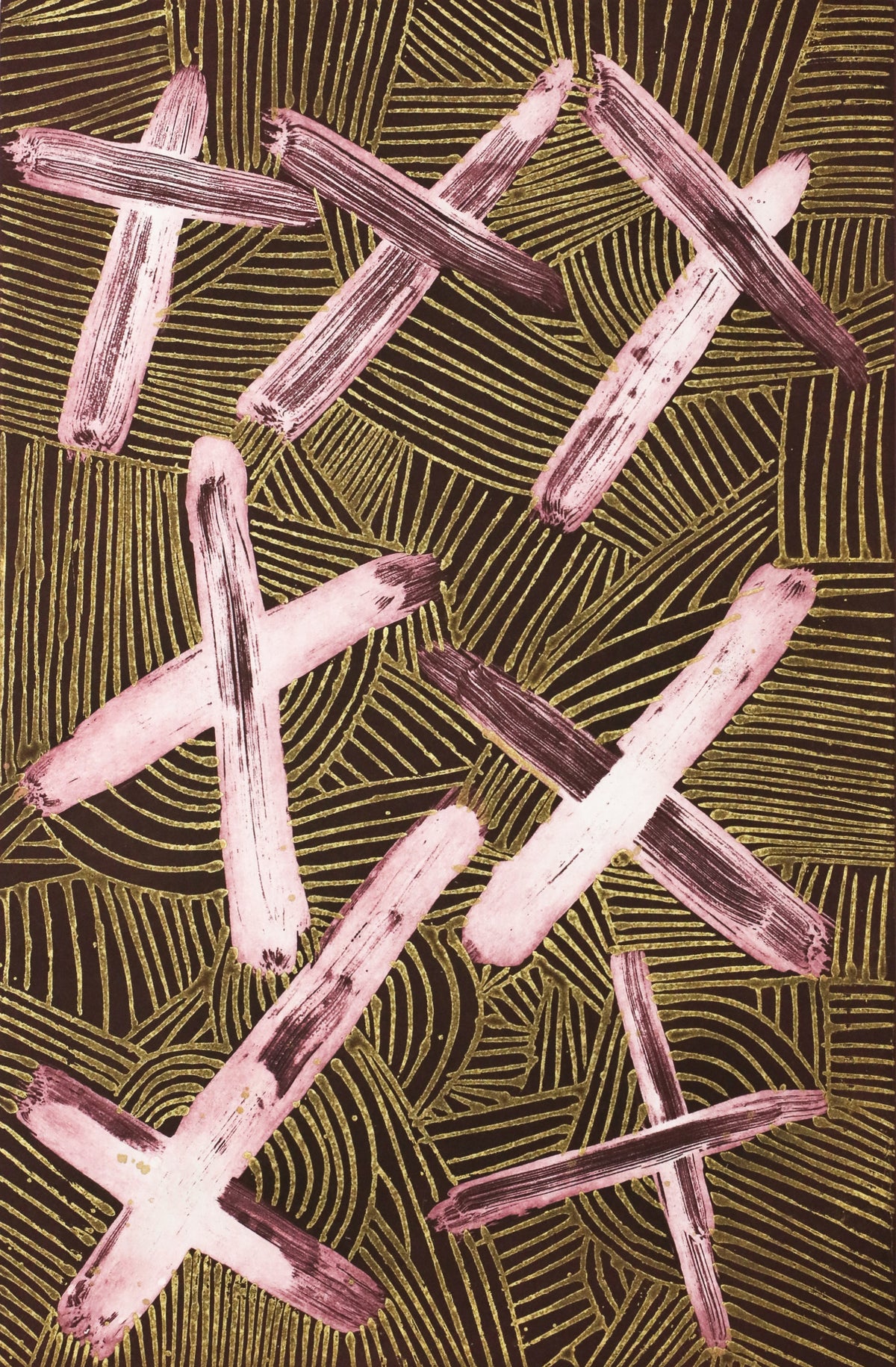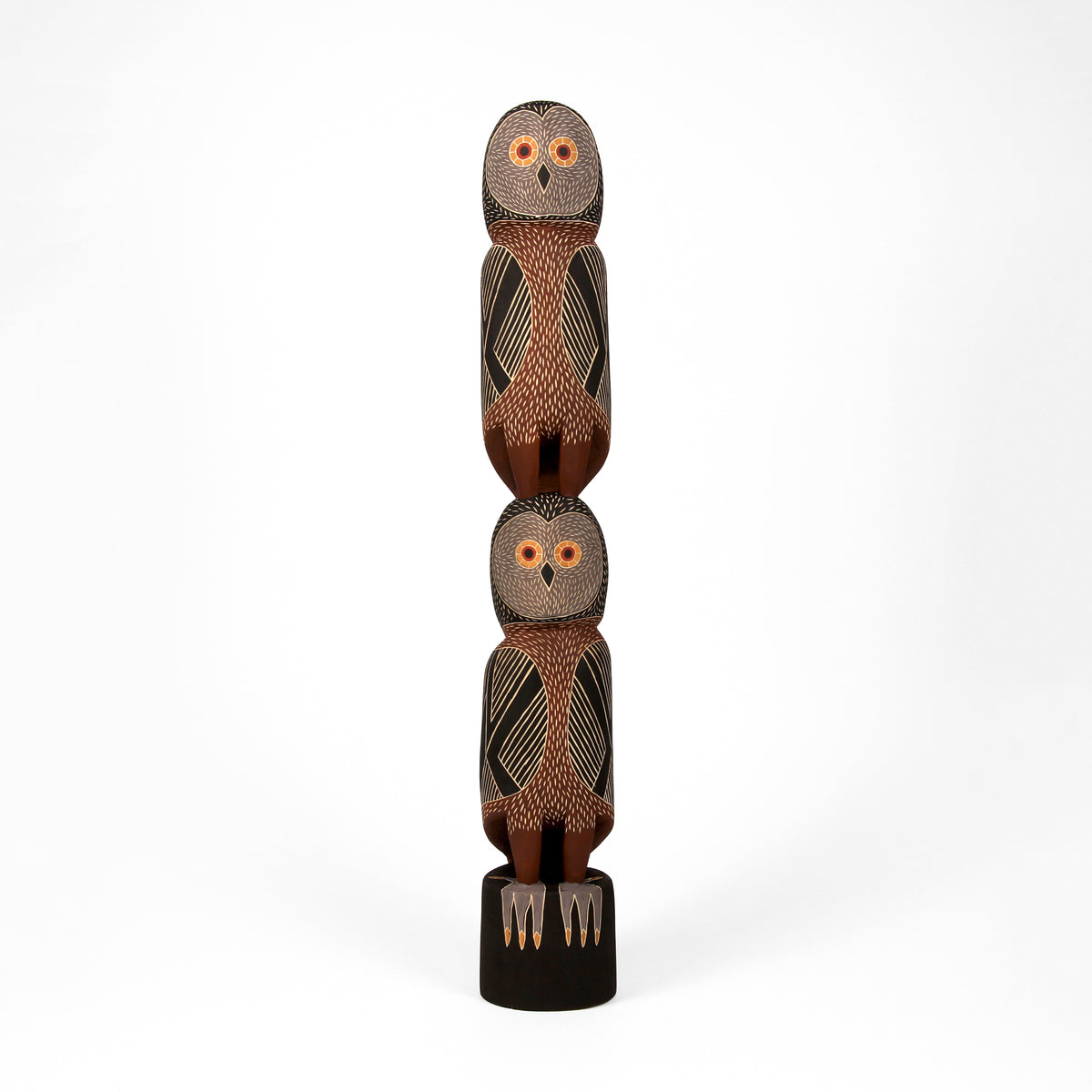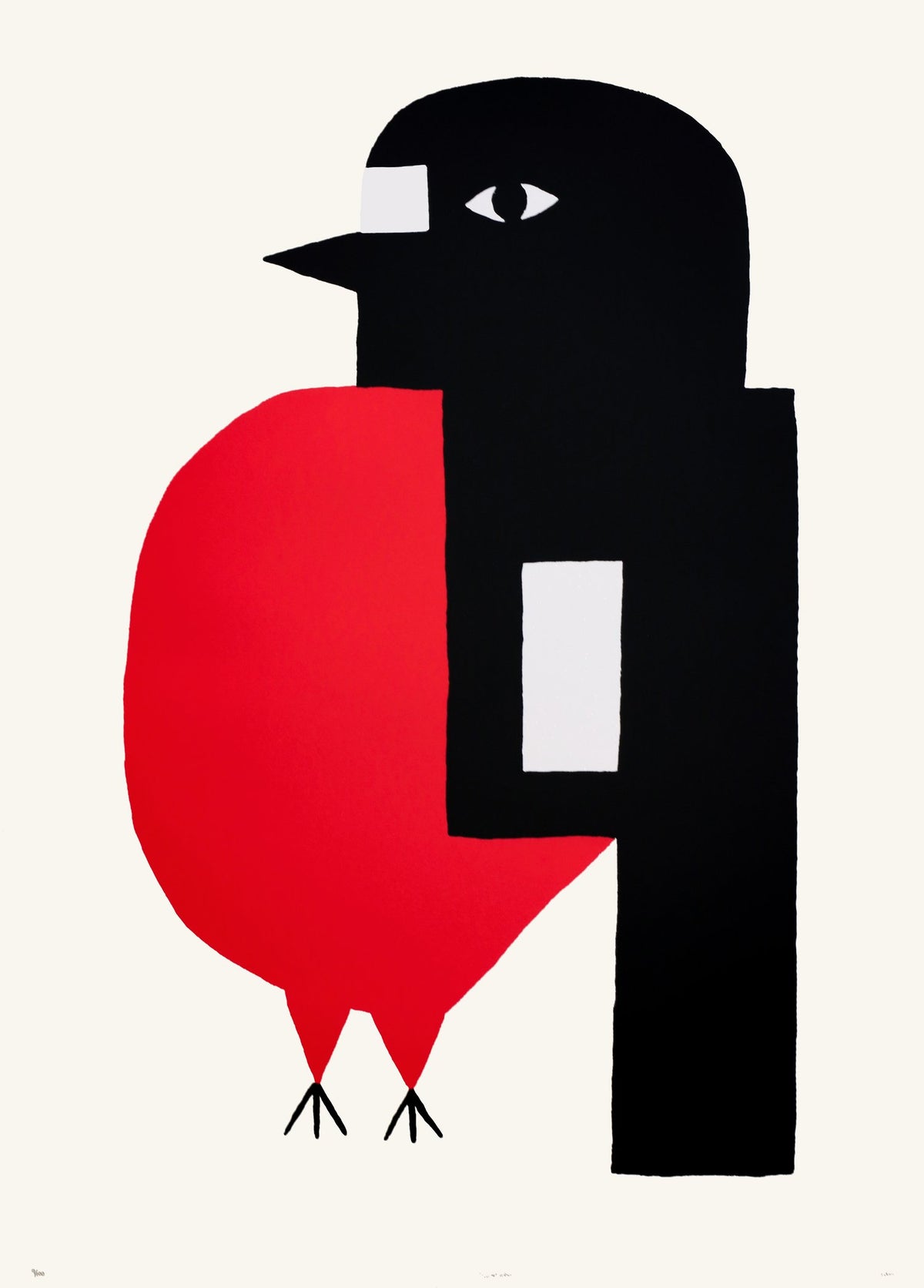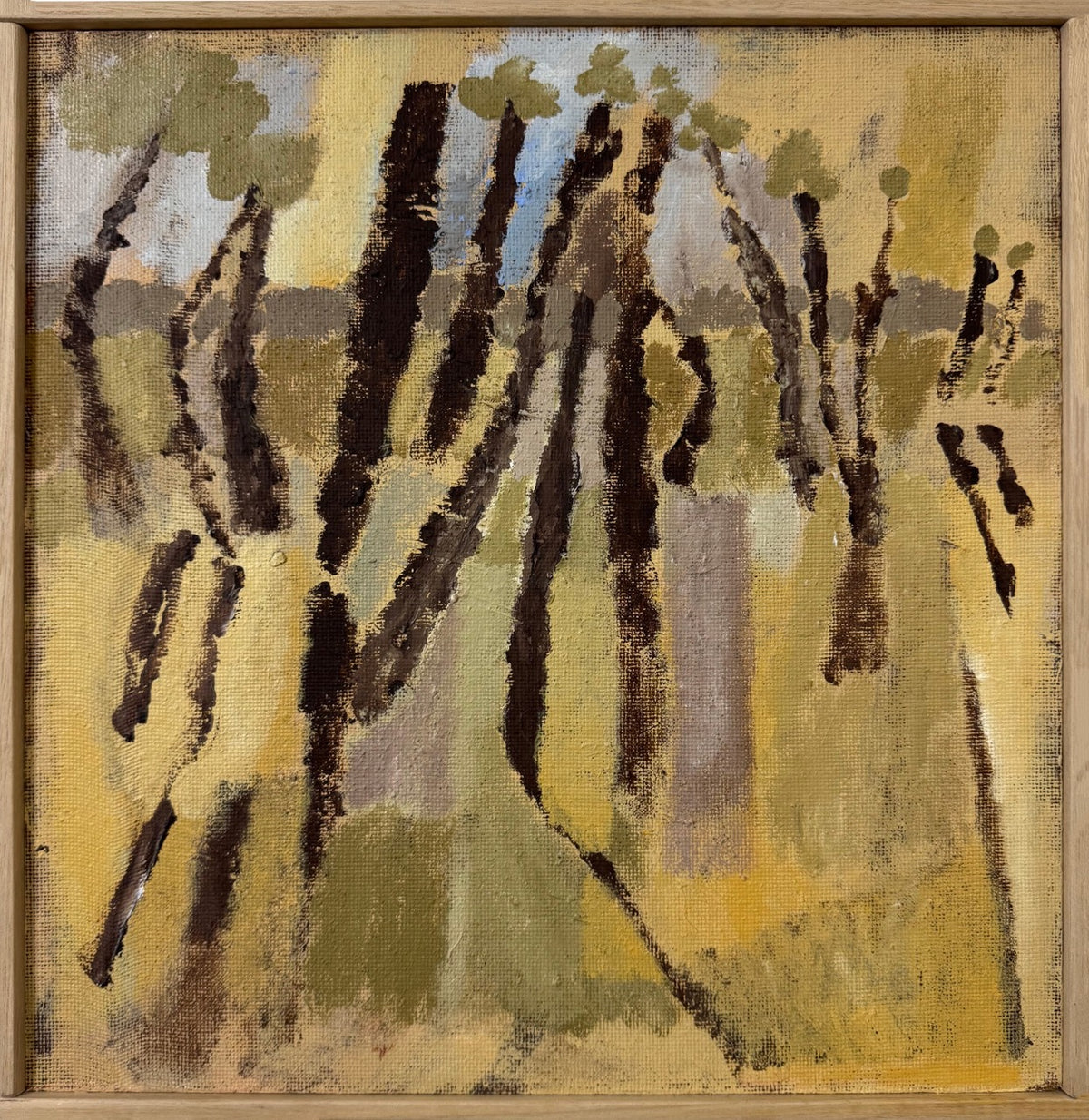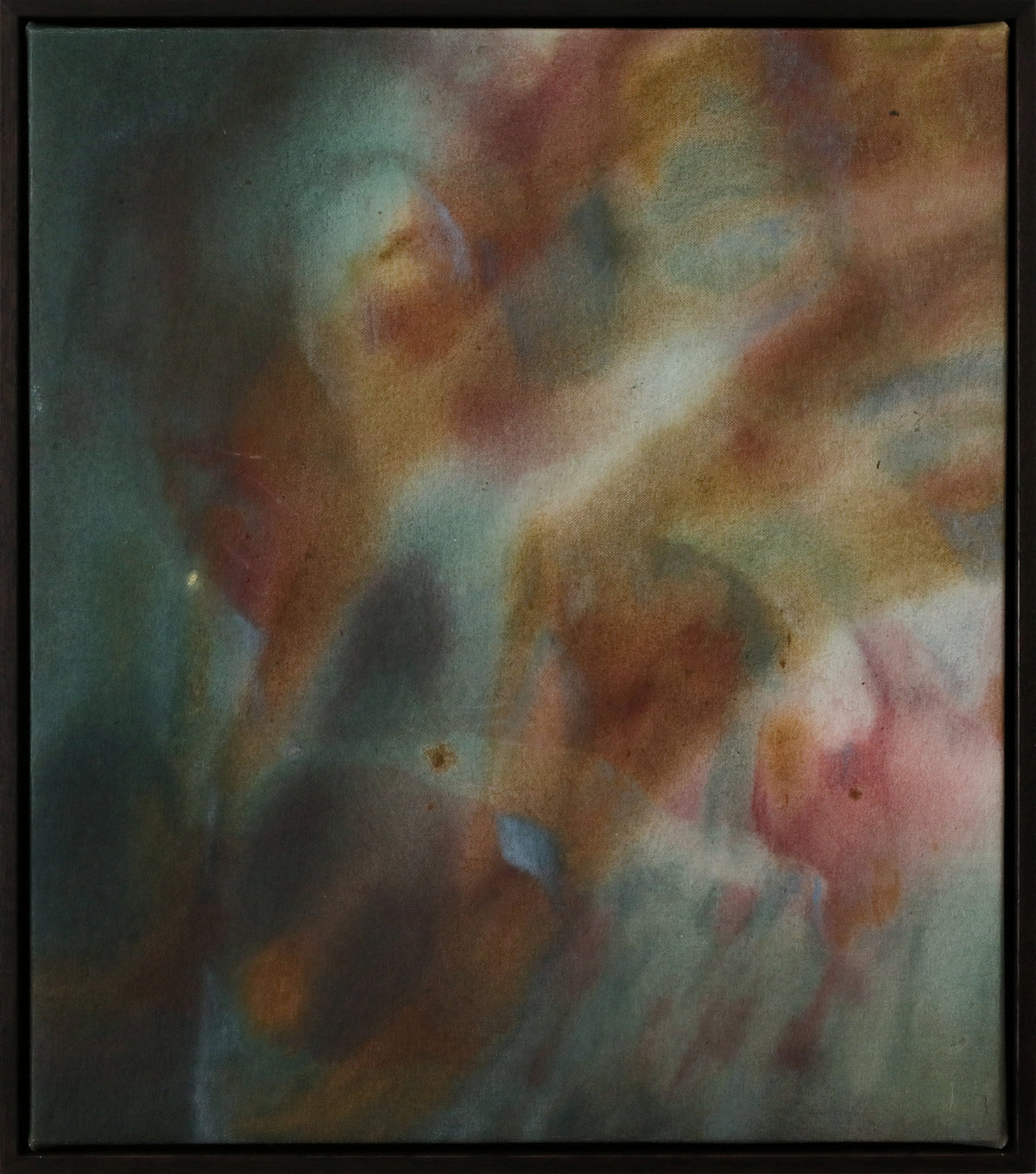Dhatam 5346-25
This imagery refers to perhaps the oldest continuous human religious iconographical practice: the story of the Rainbow Serpent.
Estimates vary from 40,000-60,000 years on the depictions of the Rainbow Serpent in West Arnhem rock shelters.
Amongst the Dhatam, waterlillies, two ancestral figures travelled Gälpu clan lands and on further, during the days of early times called Waŋarr: Wititj, the all powerful rainbow serpent (olive python) and Djaykuŋ the Javanese filesnake that is a companion and possibly alternate incarnation of Wititj, living in amongst the Dhatam, or waterlillies, causing ripples and rainbows (Djari) on the surface of the water (one reference in the cross hatch).
The story of Wititj is of storm and monsoon, in the ancestral past. It has particular reference to the mating of Wititj during the beginning of the wet season when the Djarrwa (square shaped thundercloud) begin forming and the lightning starts striking.
The Galpu clan miny’tji (sacred clan design behind the lillies) represents Djari (rainbows) and the power of the lightning within them.
It also refers to the power of the storm created by Wititj, the diagonal lines representing trees that have been knocked down as Wititj moves from place to place. The ribs of the snake also form the basis of the sacred design here.
The sun shining against the scales of the snake form a prism of light like a rainbow. The arc which a snake in motion travels through holds to a rainbow shape but causes the oily shimmer to refract the colours of the rainbow. The power of the lightning is made manifest when they strike their tongue. The thunder being the sound they make as they move along the ground. The morning after a major cyclone there are swathes of stringybark bent over in snake trails through the bush in just the same way a normal scale snake leaves bent over grass traceable by trained trackers. After Cyclone Monica there was a path cleared through the stringybark forest almost from Maningrida to Jabiru.
In mortuary ceremony for Gälpu, the slithering line of dancers take on the form of Wititj and coil in the sand searching for their place. As the spirit comes to rest it adopts the metaphor of a python setlling its head into the fork in the tree, known as Galmak, the final resting place of Wititj. Other references are the bunches of leaves dancers hold in their hands wet and shining in the sun, perhaps like a rainbow. This pattern is the fury of the tempest seen through the relief of the emerging survivor as the storm moves on sucking the cloud with it allowing the sun to shine.
About the artist:
Djul’djul is the daughter of the famous Gälpu clan artist Mithinarri Gurruwiwi. She is a very precise and knowledgeable wood carver and painter. Together with her sister Manany and brother Watjuku (deceased) they have inherited a lot of painting knowledge and skill from their father. All three artists also share the same Gumatj mother, Duwambu Burarrwaŋa.
Djul’djul’s husband was Burrŋupurrŋu (Bruce) Wunuŋmurra (deceased), a highly respected yiḏaki player and maker. She painted the yiḏaki he made, often with Gälpu clan designs from her own clan. These designs sometimes feature Wititj the olive python, djaykuŋ the file-snake and guḏurrku the brolga. At other times they are decorated with beautiful columns of diamonds, the sacred miny'tji belonging to the Dhaḻwaŋu clan, representing the freshwater system where their creation ancestor Barama emerged from the water.
These yiḏaki are highly priced among collectors and players world-wide, being commonly referred to as some of the best works available. Djul'djul's bark paintings, ḻarrakitj and carvings are now becoming sought after by dealers and collectors for their fine attention to detail. Recently she has also been producing worrwurr (owls) in collaborayion with her sister Manany.
In recent years, Didiwarr, one of her sons, has been making yiḏaki that she has been painting. These instruments are often decorated with a coiled djaykuŋ at the distal end. This is a new collaboration, continuing the legacy of their work with Burrŋupurrŋu.
SHIPPING
Brunswick Street Gallery would be pleased to arrange a quote for shipping if you are unable to collect directly from us.
Please be advised that oversized and/or fragile artwork or artworks being sent to remote areas may incur additional shipping costs.
FLEXIBLE PAYMENT
Afterpay, Laybuy
EXHIBITIONS
Artworks purchased from current exhibitions will be available for collection or shipping after the exhibition has ended.
–


